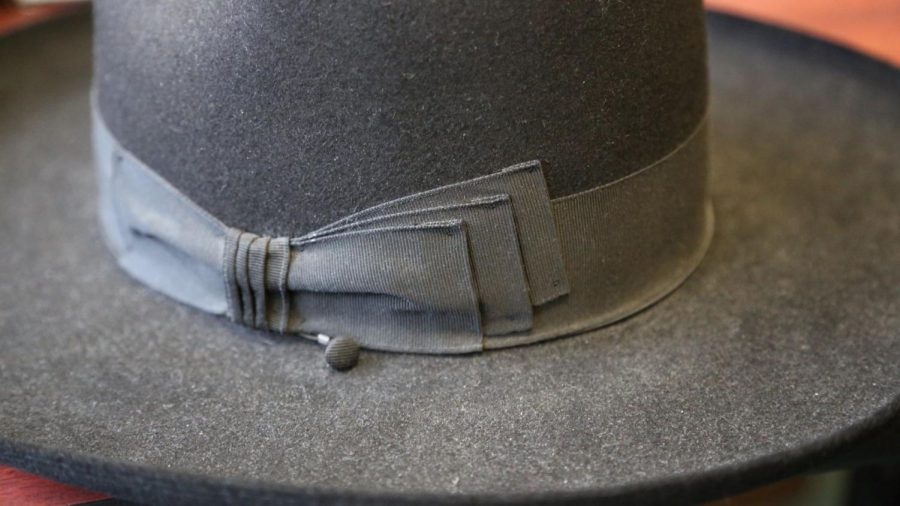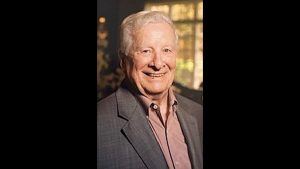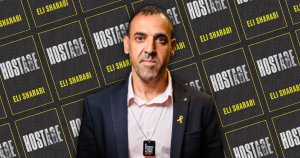The history of the Borsalino, the wide-brimmed fedora worn my some Orthodox Jewish men
Published May 9, 2023
Borsalino.
The word rolls off the tongue. Is it a pasta dish at Charlie Gitto’s? A high performance racecar? Or maybe a lake in Italy where George and Amal Clooney hang out?
In reality, the Borsalino is an Italian hat, an imposing black, wide-brimmed fedora. It is also the head covering of choice for Torah-observant Jews. In the University City area near Delmar Blvd. and Old Bonhomme Rd., you are likely to see many men and boys wearing Borsalinos, typically on their way to shul.
The evolution of the Borsalino from a stylish wardrobe accessory to a religious necessity is a fascinating story.
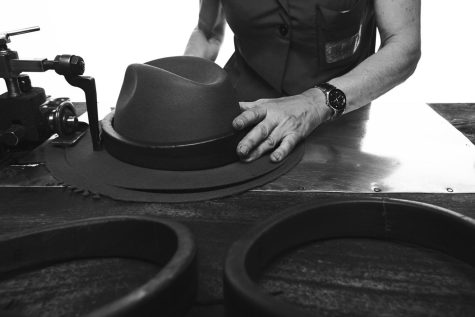
Origins In 1857
The Borsalino hat brand began as a small workshop owned by Giuseppe Borsalino.
At age 16, Guiseppe headed for Paris to study fashion. He dreamt of returning to Italy as a certified master hatter. He eventually opened a large factory in Alessandria. By 1914, production at the Borsalino factory rose to two million hats per year.
The company grew over the decades but continued to focus on quality. It takes nearly six months and over 50 operations to create one hat. The creation of a Borsalino is decidedly old school. In fact, two of the original machines used by the Borsalino family in 1857 are still churning out hats. The process begins with Belgian rabbit fur, magically transformed into smooth felt.
A Borsalino is primarily hand-made which explains the price. A new Borsalino costs about $300. You can find cheaper black wide-brimmed hats, but they lack the Borsalino style. I found a “New! – Authentic Hasidic Beaver Hat” on eBay for $69.99, but the flat top, stovepipe sides and plain brim had a Walter White/Heisenberg vibe.
Initially, the Borsalino was a bowler, then a homburg. It evolved into something else entirely, a reinvention of the fedora style. That was born in part out of necessity. At the end of the 19th century, it was considered good manners for a man to remove his hat out of respect for a lady. The homburg shape didn’t make that movement smooth. Giuseppe Borsalino decided to reshape the hat by pinching the front parts with his fingers. That created two dents, allowing the wearer to easily remove it. That was how the classic Borsalino shape was born.
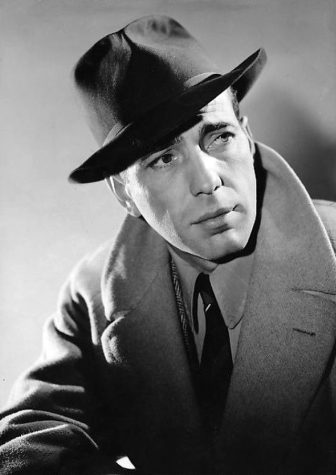
Hollywood Calls
ADVERTISEMENT
Long before the Borsalino became the hat of choice among Jews, it achieved popularity in Hollywood. Humphrey Bogart and Ingrid Bergman wore them in Casablanca. Jean Paul Belmondo and Marcello Mastroianni wore Borsalinos. Fred Astaire, Winston Churchill and Ernest Hemingway favored the hat, too. Al Pacino—as Michael Corleone—wore one. So did real-life mobster Al Capone.
In 1963, a young actor visited the Borsalino office in New York and announced: “I would like a hat like the one Mastroianni wears in the film 8-1/2.” That was not possible, since the hat used in the movie had a unique brim and had been specifically made for Federico Fellini.
The actor didn’t give up, though. A year later while he was making a film in Europe, he showed up at the Alessandria Borsalino factory and said: “Good evening, my name is Robert Redford and I want a hat like Mastroianni’s.”
Michael Jackson wore a Borsalino while performing the moonwalk. Harrison Ford, as Indiana Jones, wore one. Ditto Pharrell Williams, Justin Timberlake, Kate Moss, Leonardo Di Caprio, Madonna and Johnny Depp.
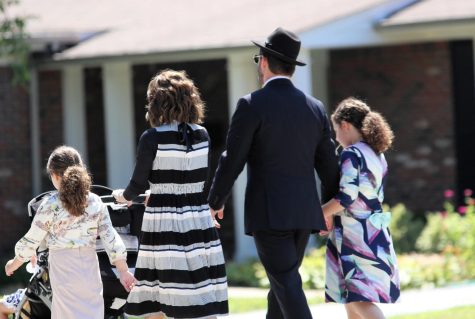
Why We Wear Head Covering
Nowhere in the Torah is there a commandment to wear a wide-brimmed black hat. In Talmudic times, men of great stature often wore a head covering. The practice of wearing a kippah is a custom that has now been accepted as a common practice for all men to wear, especially during prayer. Many men wear a kippah all day, at work, at play and of course, during prayer.
Most men who wear a wide-brimmed Borsalino also have a standard kippah on under it. To learn where the double-head cover came from, we turn to the writings of the Chofetz Chaim, Rabbi Yisroel Meir HaKohen.
The Chofetz Chaim was a learned rabbi in the late 1800s. In the Mishnah Berurah commentary on Jewish Law, he wrote that it’s proper to wear an extra head covering at a time of prayer.
That doesn’t explain the black wide-brimmed hat, though. Throughout most of the 1900s, most grown men did wear fedoras. But they could be any color. Sometime in the 1960s, black clothing took hold. The black Borsalino accessorizes a black suit and tie, offering a combination of reverence and style.
Dress For Success
Rabbi Menachem Tendler, the head rabbi at U. City Shul is the owner of three Borsalinos. Tendler suggests the popularity of the hat may derive from the early 1900s and Rabbi Nosson Zvi Finkel.
Finkel was known as the Alter of Slabodka. He was an influential leader of Orthodox Judaism in Eastern Europe and the founder of the Slabodka Yeshiva, in Vilijampolė, Lithuania.
“Young boys who would sit and learn from Finkel,” Rabbi Tendler said. “They were very poor and looked down upon—they were nebbishes. Finkel’s thing was that if the Torah is the manual for the world and if you’re involved in it, then you’ve got to be respectable and look respectable.
“He raised money so every boy in his synagogue would walk around in a suit, a hat, a tie, they would walk around town and people would say, ‘That is a successful person!’ But really, it was an image he created for the Yeshiva boys. That’s really how it became wearing a hat in the street, wearing a hat and the way you represent yourself, it really became part of a Yeshiva uniform.”
Tendler said it’s likely the practice of wearing a black hat and suit was a way of helping young Yeshiva students move up in the world, and help them transform from poverty to respectability.
“A person who wakes up and looks like a schlepper starts to treat himself like a shlepper,” he said. “And if you wake up and you dress like a millionaire, it has a big influence. This is how things started. Nowadays, it’s become like the Yeshiva boy’s uniform.”
Tendler is quick to point out that a large, black hat itself has little to do with observance.
“The black hat has ZERO to do with observance,” he said. “It doesn’t mean I’m a better Jew than anybody else. There’s no obligation, no halacha, no source. It’s a way that a person wants to represent themselves. The Yeshiva world is a wonderful world to represent, but G-d forbid if a person is a faker, and a person does not have good character traits and their life is not in line with what the hat is supposed to represent, the hat doesn’t make you more observant, and you’re no less observant if you don’t have a black hat.”
On the other hand, Tendler admits when he wears his Borsalino, he does feel a certain something.
“I actually feel it, all of a sudden you put on something special for prayer, and it adds a certain element or a certain importance when you’re speaking to a power that is all powerful.”
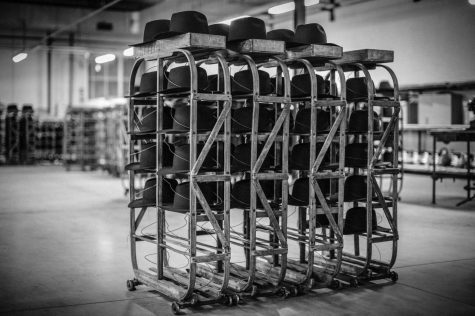
The Official Word From Milan
There’s no question that the Borsalino marketing team is aware of the hat’s popularity among Torah-observant Jews. A Borsalino spokesperson said the hat “has commercial bonds with the representatives of the Jewish culture and that is an undeniable fact. Borsalino doesn’t promote or enhance a group of people according to their belonging or their beliefs.
“Our only belief is quality and we take very seriously the importance of keeping our production at a high level for all the people who share this value with us, no matter their provenience, their beliefs or even their religion,” the Borsalino representative continued. “We are honored to serve all our customers with the same attitude in every part of the world and if, as it happened, a group of people who share the same values choose Borsalino as a sign of distinction, this is, one more time, the proof of our leadership in this commercial segment and this fact makes us very proud and pushes us to work even harder to improve day by day.”
If You Want A Borsalino
Whether you are interested in a Borsalino for its religious significance or unique style, you won’t find one for sale in St. Louis. There once was a Borsalino dealer in Chicago, but the Windy City hatter is no longer open. That leaves New Jersey, New York City or Jerusalem.
As a further signal that Borsalino understands its market quite well, the company makes a hard-shell case with the brand name spelled in Hebrew – בורסלינו.
There has been some pushback among Borsalino fans since the company raised its prices in recent years. That hasn’t seemed to lessen its popularity, though. And the growth of the Yeshiva movement could mean continued success for the hatmaker.
It’s good news for the Borsalino brand, which had its financial struggles in recent years. About two years ago, the company was acquired by Geneva-based Haeres Equita. The private equity firm has committed to retain the quality craftsmanship, but expand to new markets. Orthodox Jewish communities reportedly account for about 10 percent of sales.
Should you take a trip to Brooklyn or Lakewood, New Jersey, to check out the hat and the Borsalino experience in person, don’t be surprised to see a number of Jewish men trying on the merchandise. That includes teenagers. Rabbi Tendler has witnessed the spectacle and it never fails to crack him up.
“It’s so funny when I walk into a hat store in New Jersey, these kids will be trying on this hat and that hat, and I’m like ‘Dude, they all look the same! It’s a black hat.’
“But when you’re wearing it, you’ve got to have the right one so you think, ‘That’s it! That’s the one!’”
Tendler also notes that the hat won’t make you a better man.
“It’s not the hat that makes the person, it’s the person inside.”



